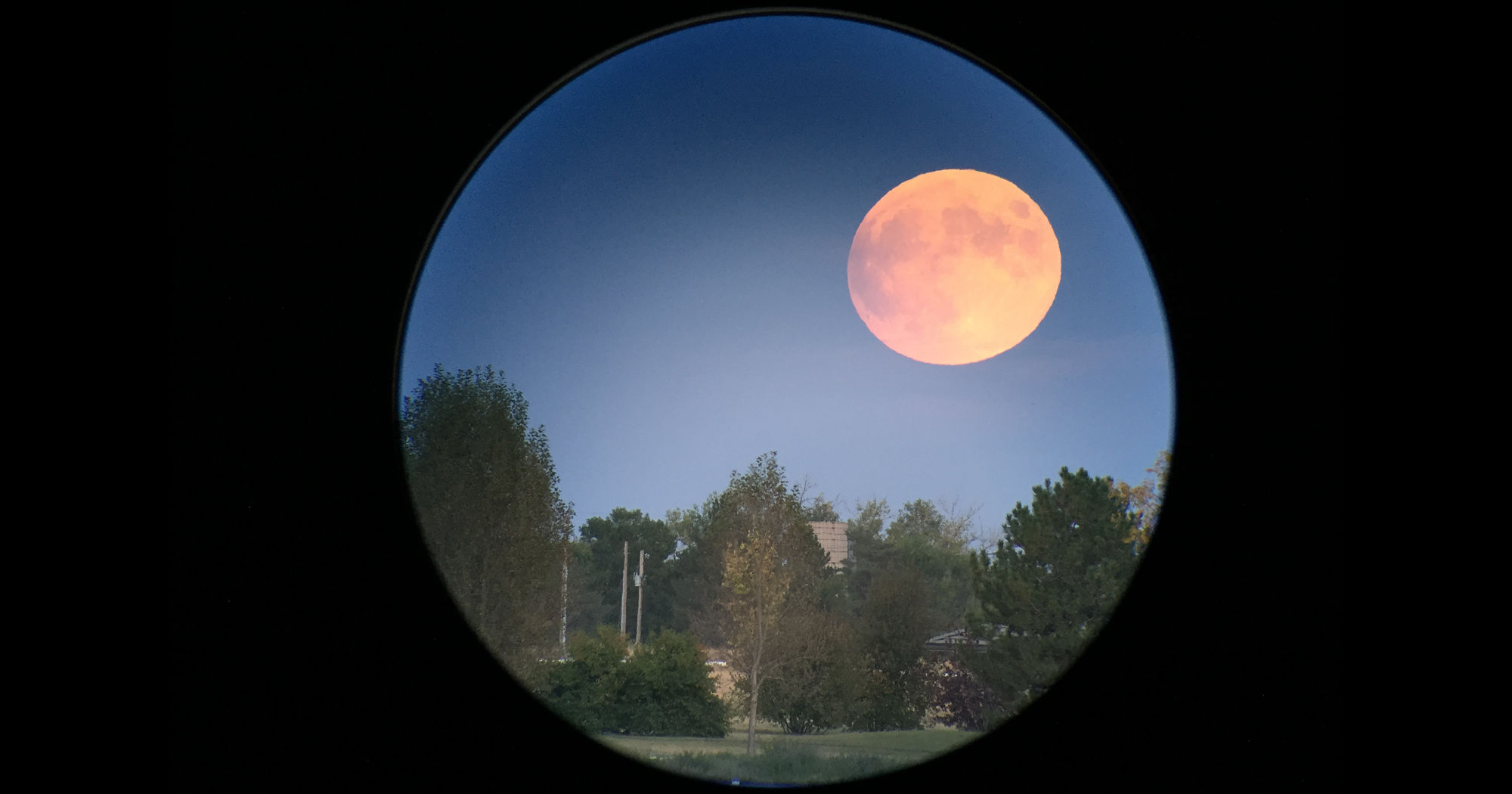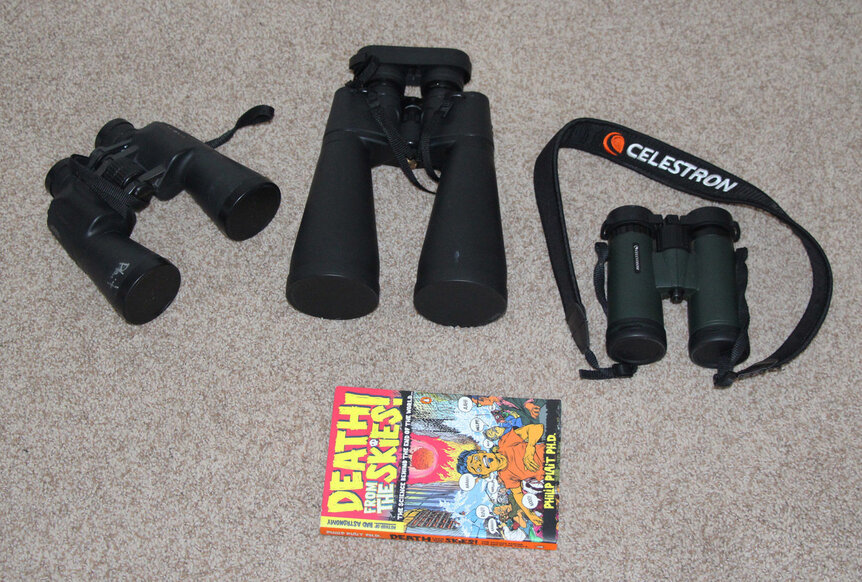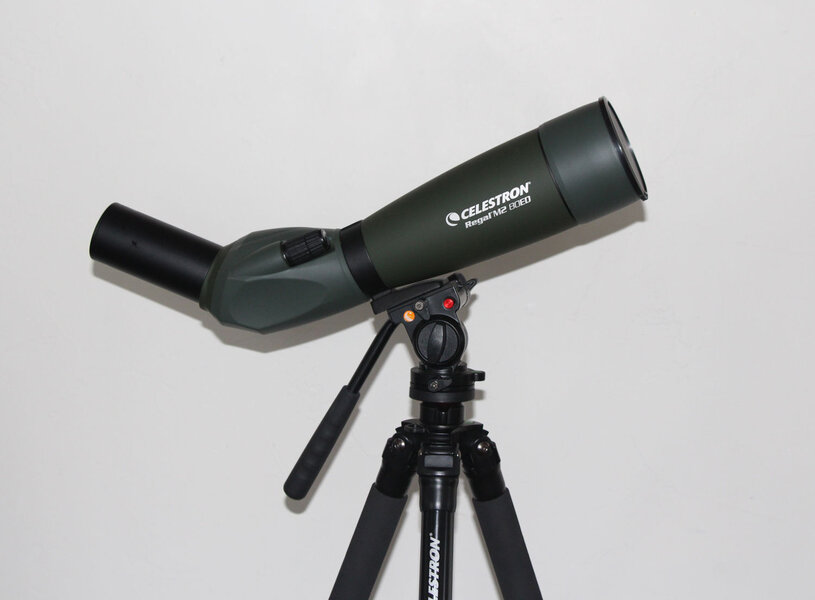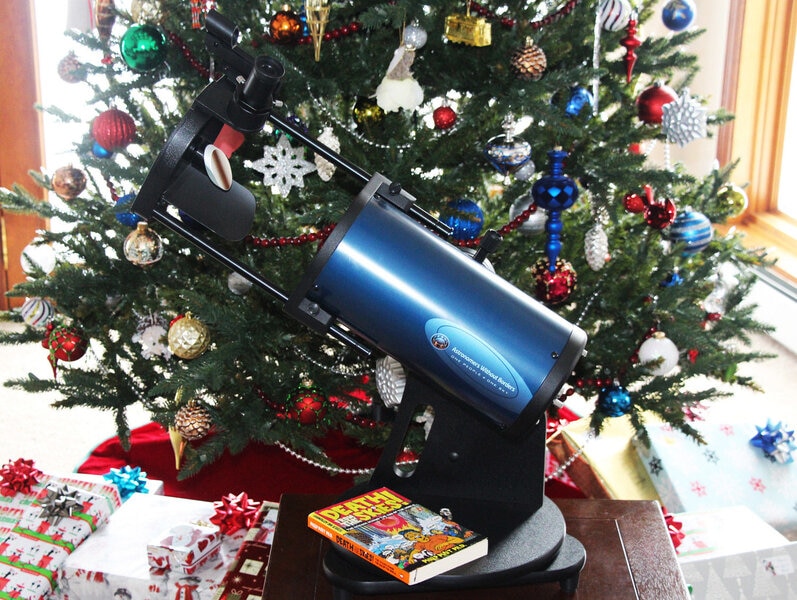Create a free profile to get unlimited access to exclusive videos, sweepstakes, and more!
A Holiday Telescope Buying Guide

Christmas is in less than two weeks, and at this time of year I always get a lot of emails, tweets, Facebook messages, telegrams, and laser encoded extraterrestrial signals asking me what kind of telescope is a good one to buy.
This happens so often I wrote up a brief FAQ, which I update every year. READ THAT FIRST! Also, my dear friend and astronomer Dr. Nicole Gugliucci has written a buying guide that is extremely useful. Bottom line: Telescopes are really difficult to recommend, because everyone’s needs are different. It’s like someone asking you, “What kind of car I should buy?” with no other information.
Still, I do have some recommendations. Everything I recommend below is something I’ve used or own, so I have personal experience with them. Caveat emptor, of course, but I like ‘em.
Full disclosure(s): Celestron is a sponsor in my Science Getaways company; Alan Traino, a partner with Lunt Solar Systems, is a friend of mine; and I also know Mike Simmons, the president and founder of Astronomers Without Borders. I’ve had a professional relationship with all of these people for some time now and have always been impressed with the work they do. That’s why I’m recommending them. I’ll note that I get to say what I like here on the blog, and I wouldn’t endorse a product unless I actually liked it. (I’ve been asked to endorse products I haven’t used or didn’t like, and turned those down flat.) All three groups have provided me with equipment under various circumstances, so I’ve used these products and support them.
Got it? OK, I know time’s running short, so let’s get to it.
Binoculars and Spotting ’Scope
In general I recommend buying binoculars first; they’re (usually) far less expensive, fun to use, and can be used during the day for birdwatching and other activities. I have several pairs; my favorite is the Celestron 8x42 Trailseeker binoculars. They’re small, handy, and lightweight. They’re best for daytime stuff, but I use them at night sometimes to scan the sky and look for clusters and nebulae.
You might want something with a little more magnifying power; most optical companies make a range of 10x50 binocs (I like and still use my ancient pair from Minolta that I’ve had since grad school), which are great for causal astronomical viewing. I also have a pair of giant Celestron 15x70 SkyMaster binocs that are quite good, especially given the ridiculously low price. You’ll need a tripod, though; they’re a bit heavy for stargazing.
Universe Today has a nice guide to binoculars, too.
I also have a Celestron Regal M2 80ED spotting ‘scope I love using. It’s an 80 mm lens (they also come in 65 and 100 mm), and I keep it handy for when we see our resident bald eagle or great horned owl hanging around. It’s also good for looking at the Moon and other easy-to-find celestial objects (it doesn’t have a finder on it, so finding fainter objects is tougher). I used it for the September 2015 lunar eclipse live viewing and the Venus-Moon occultation, too.
OK, What About Telescopes?
As for telescopes, as I said, that gets complicated fast. As I state in my FAQ, my advice here is to find a local astronomy club and see what their members use. Many clubs have public star parties where you can check out the bewildering array of ‘scopes available—not just in size, but also the way they collect light (lens or mirror) and the design of the telescope itself (Schmidt-Cassegrain, Dobsonian, refractor, Newtonian, and on and on). I also have a Crash Course Astronomy episode on telescopes that’ll help you familiarize yourself with how they work.
Still, a lot of folks ask me for a good starter ‘scope, and I’ve always hesitated due to these complications. But that’s changed now, because I’ve used the OneSky.
The OneSky telescope is the brainchild of the very good people at Astronomers Without Borders (or AWB), a group I strongly support. They work around the world, bringing the skies to people in developing countries. Their motto is “One Sky, One People.” I couldn’t agree more.
They wanted to make a small, easy-to-use telescope that was, above all, inexpensive. They succeeded, and they did so brilliantly.
The OneSky is a small tabletop telescope. It has a 135 mm (5.3 inch) mirror, which is big enough to see fainter objects but designed in such a way that it’s not terribly heavy, just 6 kg (14 pounds). It’s mounted on a stand that swivels left-right and up-down (or, more technically, in azimuth and altitude). The tube is short and has an extension that holds some of the optics, allowing the ‘scope to be more compact. I found it pretty easy to use, and quite a bit of fun. It’s a true “grab and go” telescope.
But don’t take my word for it: Sky and Telescope has a detailed review, and like me they loved it. It’s a great ‘scope for a beginner, and I highly recommend it.
And the best part? It’s only $200. Seriously. I was shocked when I saw the price. It even comes with two eyepieces and other accessories.
They can sell it so inexpensively because of a unique deal with Celestron. The company oversees the production of the ‘scopes, then imports, warehouses, and ships them essentially at cost to support AWB. (Note: Because of the details of this deal, they cannot sell these ‘scopes outside the U.S.) This allows a whopping $95 from each sale to go to AWB, which they use to continue their good work.
I’m really impressed by this. And for that price you get a pretty solid view of the sky without a huge hassle or destroying your wallet.
There’s a very popular thread on the Cloudy Nights forum for people who own a OneSky, and who also mod them quite a bit. Check that out to get more information. AWB has an online store, too, with a few more items you can look at, but honestly, the OneSky is the way to go if you’re just starting out. Though that 16” Dobs looks pretty tasty …
One caveat: AWB is currently out of stock of the ‘scope. But don’t despair! They’re getting a new shipment literally any day now, and if they can’t get one to you by Christmas, they’ll send you a PDF certificate to print and put under the tree—and that includes right up to Christmas Eve! They expect to ship soon after the new year. You won’t have to wait long.
I have two more ‘scopes I’ll mention. I own both of these, but I’ll note they’re a) a bit pricier, and 2) probably better for the more advanced user.
First is the 20 cm (8”) Celestron C8 S-GT Schmidt-Cassegrain. That’s my workhorse ‘scope, the one I bring when I travel to dark sites. This is a very nice piece of equipment, suitable for observing the Moon, planets, and deep sky objects like nebulae and galaxies. It’s also good for astrophotography, though I’ll admit I don’t use it for that. Not yet, at least.
Mind you, it’s not a starter ‘scope! You’ll want some experience before using something like this. But if you do have experience, it’s a great ‘scope. I’ve spent countless hours with it. I saw Supernova 2014J with it last year, and that was an experience I’ll never forget.
I also have a Lunt Solar Systems LS 50T H-alpha Sun-observing telescope. It’s a small (50 mm) refractor that has a built-in filter that allows solar viewing. This is a fine piece of equipment! I’ve seen sunspots, prominences, filaments, and more with it. I’m not sure I would recommend this for fresh beginners to astronomy, since it’s a dedicated solar viewer (you can’t observe anything else with it due to the filter), but if you want to get a good look at our nearest star, it’s a wonder. Lunt has several different sizes of this ‘scope, too. (PSA: NEVER EVER EVER look through a telescope at the Sun unless it has been properly equipped to do so and you know what you're doing. The Lunt 'scopes are designed for this, so they're safe. Otherwise: NO.)
Again, though, these may not be right for you, so please, if you’re in the market for a bigger telescope, check with your local club first. This is a big investment and could be the start or continuation of a lifetime’s love of the sky. It is not a decision to be made lightly, and I know a lot of great ‘scopes sit in closets collecting dust starting in January every year.
Have a care, think this through, and when you do get a telescope, know that with patience, with practice, and with a sense of wonder, the heavens above you will yield their gifts.





























